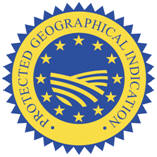Have
you
ever
picked
up
something
from
the
grocery
store
thinking
it
was
Italian
but
didn’t
taste
anywhere
near
what
you
had
when
you
were
in
Italy?
Italian
food
exports
are
a
big
part
of
Italy’s
economy,
and
with
Italian
food
being
so
popular
throughout
the
world,
companies
selling
fake
and
counterfeit
products
are
always
looking
to
profit
from
the
high
quality
products
for
which
Italy
is
so
well
known.
In
this
article
we
take
a
look
at
the
best
ways
to
identify
true,
authentic
Italian
food
products.
At
the
end
of
2016,
Italian
food
exports
were
worth
€38
billion
(roughly
$40
billion).
That
is
an
enormous
amount
of
income
for
Italy’s
economy,
and
exports
of
Italian
food
products
are
expected
to
grow
in
the
coming
years.
Italy
certainly
wants
to
protect
this
important
economic
generator
and
has
gone
to
great
lengths
to
do
so.
Authentic
Italian
products
such
as
wine,
cheese,
extra
virgin
olive
oil
and
pasta
are
just
a
few
of
the
most
popular
Italian
food
items
sold
in
supermarkets
throughout
the
United
States.
But
how
can
you
tell
what
you
are
buying
is
truly
Italian?
In
the
1960s
Italian
food
and
wine
producers
were
threatened
by
inferior
imposter
products
being
peddled
as
real
Italian
exports.
To
protect
their
reputation,
the
Italian
government
created
a
certified
quality
control
system
similar
to
that
of
winemakers
in
France,
establishing
legal
certifications
based
on a
rigorous
set
of
standards.
When
Italy
joined
the
European
Union,
the
system
was
updated
to
align
with
the
legal
standards
established
for
all
European
Union
members.
Certified
products
that
meet
these
rigorous
quality
standards
contain
at
least
one
of
the
following
emblems
somewhere
on
their
packaging:
-
Protected
Designation
of
Origin
(Denominazione
d’Origine
Protetta)
also
known
as
DOP
or
PDO

Food
items
with
DOP
certification
are
legally
guaranteed
to
have
been
made,
handled
and
packaged
in a
specific
location
according
to
exacting
specifications
which
are
based
on
historically
traditional
methods.
Every
element
of
the
production,
processing
and
packaging
of a
DOP
product
is
regulated.
There
are
currently
over
500
products
(food,
wine
and
spirits)
in
Italy
that
have
received
DOP
certification.
Proscuitto
di
Parma,
Gaeta
olives,
Genovese
Basil
and
Parmigiano
Reggiano
cheese
are
just
a
few
of
the
items
that
are
marked
with
this
certification.
-
Protected
Geographical
Indication
(Indicazione
Geographica
Protetta)
also
known
as
IGP
or
PGI

Items
with
the
IGP
certification
indicate
that
your
food
product
is
tied
to a
specific
location
or
region
and
was
produced,
packaged
and
prepared
in
that
particular
area.
Balsamic
vinegar
from
Modena
and
Mortadella
from
Bologna
are
just
two
products
that
are
certified
IGP.
-
DOC
and
DOCG
The
DOC
and
DOCG
certifications
are
applied
to
Italian
wines.
DOC
stands
for
Denominazione
d’Origine
Controllata
(Controlled
Designation
of
Origin)
and
is
mirrored
off
of
the
French
system
for
authentic
wine
production.
DOC
wines
are
produced
according
to
stringent
standards
that
help
to
preserve
authentic
Italian
winemaking
traditions.
To
receive
a
DOC
certification,
the
wine
must
also
be
produced
in a
specific
zone
or
location.
There
are
currently
over
300
DOC
certified
Italian
wines.
To
find
the
DOC
label
on
the
bottle,
it
is
typically
affixed
around
the
upper
neck
of
the
bottle,
just
below
the
capsule.
DOCG
certification
means
Denominazione
d’Origine
Controllata
e
Garantita
(Controlled
and
Guaranteed
Designation
of
Origin).
This
is
the
most
rigorous
certification
for
Italian
wines
because
it
comes
with
the
Italian
government
guarantee
that
the
wine
was
produced
to
exacting
standards
based
on
its
location
and
the
traditional
winemaking
techniques
for
that
particular
type
of
wine.
There
are
only
71
types
of
Italian
wines
that
have
this
particular
certification.
Chianti
Classico
and
Barolo
are
two
types
of
wines
that
have
a
DOCG
certification.
If
you
have
any
question
about
the
quality
of
your
Italian
food
product,
look
for
these
symbols
to
ensure
you
are
buying
an
authentic
Italian
product
that
meets
the
highest
quality
standards.



